



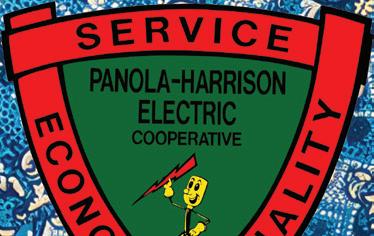


























From the rich maritime heritage of whaling towns to quaint island villages and grand seaside mansions of the Gilded Age, our small, comfortable ships can take you to the heart of New England’s most treasured destinations. Be welcomed back to your home away from home, where you can delight in the warm camaraderie of fellow guests and crew.










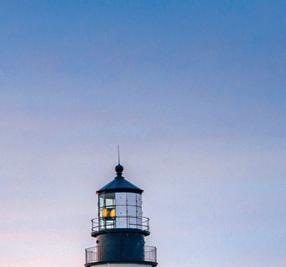





























Before writing this column, I took some time to reflect on what I said in my column this time last year. One thing is for sure: Our industry is constantly changing.
Last year, I talked about how far we have come and the changes we have seen in our 87-year history. We certainly don’t provide power the same way we did all those years ago. However, one thing has not changed: We have always been committed to and will continue to be committed to providing safe, reliable, affordable electricity.
Your Louisiana electric cooperatives continue to adopt new and improved methods to obtain power supply, including renewable energy. Systems have become more automated. Mother Nature has taught us we must build back stronger and more resilient. Technology plays a more significant role in delivering electricity to you, the consumer-member, and how our employees manage their daily tasks.
Last year, our Youth Leadership Council Representative Jacob Mullican was asked, “What do you think about when you flick on the power switch?” His response was probably the same as you would give if asked the same question, “I don’t think; I just expect.” He was right. You expect the lights to come on when you flick the switch. You set high expectations for your
electric cooperative’s directors, management and employees every minute of every day, and with exceptions to bad weather or mechanical failures, we deliver on those expectations.
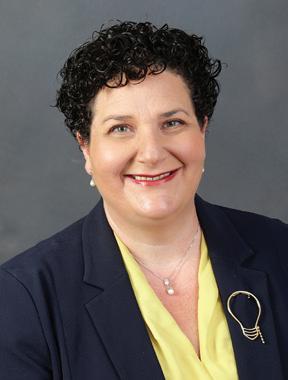
But your electric cooperative delivers so much more than just reliable power. We constantly work to keep electricity affordable and safe. We focus on creative solutions to ensure reliability and resiliency. In addition, your electric cooperatives give back by supporting educational opportunities for our youth through Youth Tour, mini-grants and 4-H, to name a few. They support and volunteer at charitable and community events. Your electric cooperative hires local men and women from your communities. They provide employees with educational opportunities. We live and work in your communities. We know what it means to power lives.
We know you have high expectations for us, and you should. But we also want you to know that safety for our employees and community is always our priority. We have a genuine concern for our community. It’s
CEO Addie Armato
DIRECTOR OF LOSS CONTROL Aarron Graham
SAFETY COORDINATOR Ricky Melancon
COMMUNICATIONS AND DIGITAL MARKETING
SPECIALIST Conley Bourgeois
ADMINISTRATIVE ASSISTANT Rhianna Garon
CREDIT UNION
Robin Plunket, manager
Jody Overhultz, representative
Board of Directors
President Dennis Glass
Vice President Michael Heinen
Secretary/Treasurer Roger Dale DeHart
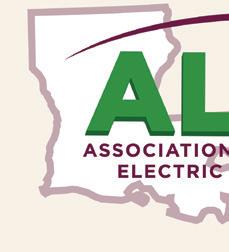
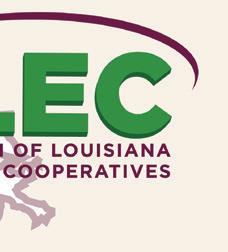
BEAUREGARD ELECTRIC COOPERATIVE INC.
J.R. Hickman Trent Buxton
CLAIBORNE ELECTRIC COOPERATIVE INC.
Mark Brown Lane Davidson
DEMCO
Daniel Berthelot Richard “Dickie” Sitman
JEFF DAVIS ELECTRIC COOPERATIVE INC.
Michael Heinen Byron Hardee
SOUTH LOUISIANA ELECTRIC COOP ASSOCIATION
Trevor Benoit Roger Dale DeHart
WASHINGTONST. TAMMANY ELECTRIC COOP INC.
Joe Jarrell Dennis Glass
Associate Member
PANOLAHARRISON ELECTRIC COOPERATIVE INC.

one of our operating principles.
Although I am not a futurist, I can confidently say this new year will bring numerous opportunities and challenges for our electric cooperatives. Whatever 2024 brings, our electric cooperatives will always put you, the member-consumer, first as they work daily to meet and, I hope, exceed your expectations.
From all of us at your Louisiana electric cooperatives, we wish you a happy, healthy and prosperous new year.

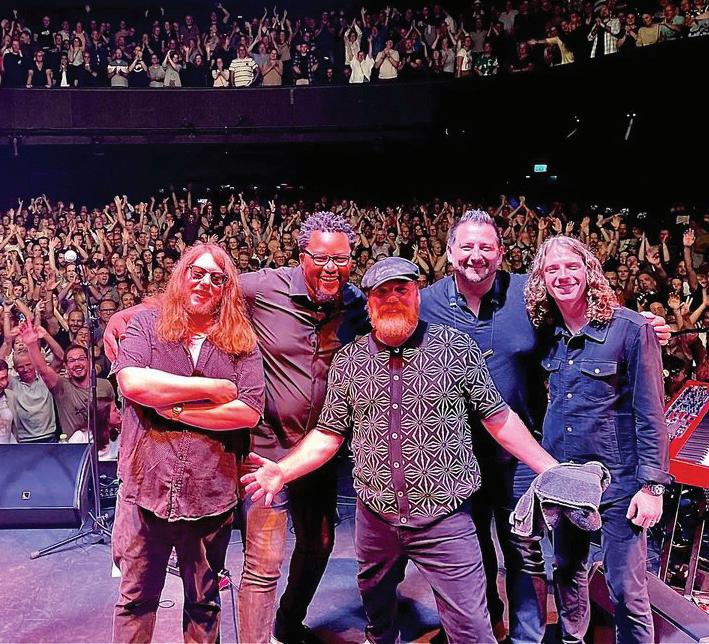
Broussard and Louisiana’s musical melting pot Page 12


PANOLAHARRISON
ELECTRIC COOPERATIVE
410 E. Houston St. • P.O. Box 1058 Marshall, TX 75671

903-935-7936 local • 800-972-1093 toll-free Website: phec.us
OFFICE HOURS
Monday through Friday, 8 a.m.–5 p.m. 24-hour service for outages and emergencies
GENERAL MANAGER
Austin Haynes
BOARD OF DIRECTORS
District 1: Paul Fortune
District 2: Albert Tiller | President
District 3: Jay Goswick | Treasurer
District 4: Robert Ortigo
District 5: Debbie Burch
District 6: Jerry L. Holmes | Vice President
District 7: Gene Stough
Year organized: 1937 Counties and parishes served: Harrison, Panola, Caddo and Desoto Connected meters: 20,648
Members: 13,722
Energized line: 2,465 miles distribution; 72 miles transmission
Panola-Harrison Electric Cooperative is an equal opportunity provider and employer. If you wish to file a civil rights program complaint of discrimination, complete the USDA Program Discrimination complaint form online at ascr.usda. gov/complaint_ filing_cust.html or at any USDA office, or call 866-632-9992 to request the form. You may also write a letter containing all of the information requested in the form. Send your completed complaint form or letter by mail to U.S. Department of Agriculture, Director, Office of Adjudication, 1400 Independence Ave. SW, Washington, D.C., 20250-9410, by fax to 202-690-7442 or by email to program.intake@usda.gov.
Louisiana Country (USPS 473-180) is published bimonthly by the Association of Louisiana Electric Co-ops Inc., 10725 Airline Hwy., Baton Rouge, LA 70816, in partnership with Pioneer Utility Resources.
Annual subscriptions: Members $2.30. Nonmembers $5.
Postmaster: Send form 3579 to 10725 Airline Hwy., Baton Rouge, LA 70816.
Periodicals postage paid at Baton Rouge, Louisiana 70821, and additional mailing offices.
Look around your home. You likely have more devices and equipment that require electricity than ever before. Our connected lives increasingly rely on more electricity to function. As demand for electricity rises, Panola-Harrison Electric Cooperative’s job is to deliver an uninterrupted 24/7 power supply—regardless of market conditions or other circumstances.
For most families, electricity use fluctuates throughout the day. PHEC strives to provide enough electricity to meet the energy needs of all members during times of highest energy use—known as peak hours. These peak times are typically in the morning as people start their day and in the evening, as they return home.
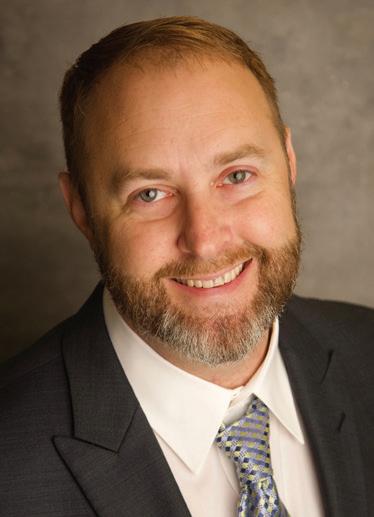
All electric utilities typically pay more for electricity during the morning and evening energy rush hours. The demand for electricity is even higher when it’s especially cold outside, requiring heating systems to run longer to warm our homes.
If the peak times concept is a bit puzzling, think of it in terms of attending a major concert. We know costs go up when there is strong demand for tickets (or electricity), and both are subject to the basic economic laws of supply and demand. When many people want the same thing, it’s more expensive. When they don’t, it’s cheaper—like a bargain matinee or an early bird special at a restaurant.
During peak periods when the cost to produce and buy power is higher, we encourage you to take simples steps to save energy. Try turning down your thermostat a few notches, turning off unnecessary lights and using large appliances only during off-peak times.
You can also save energy by plugging electronics such as computers, printers and TVs into a power strip, then turning it off at the switch during peak hours. If you have a programmable thermostat, adjust the settings to sync with off-peak periods. When everyone works together to reduce energy use during periods of high electricity demand, we can relieve pressure on the grid and save a little money along the way.
Reducing the peak impacts the power-supply cost to every co-op member. Conserving energy and making small changes can truly make a difference.
Remember, taking simple steps to save energy throughout the day and shifting energyintensive chores to off-peak hours is a smart choice for you and our communities.
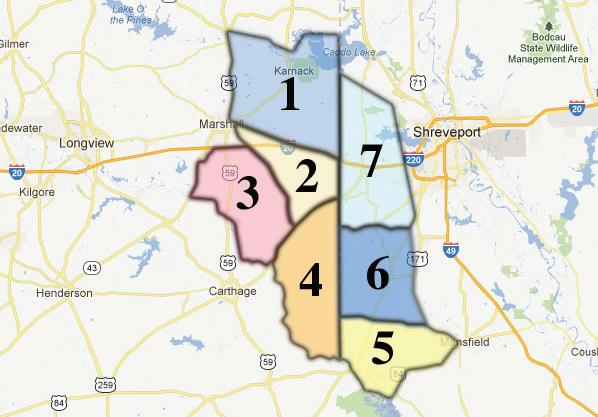
Bring your electric bill or bill stub when visiting the co-op office in Marshall with billing inquiries or payment questions. Payments can be made by mail, at our local office, by phone or on our website. We accept cash, check, electronic funds transfer, credit card and check by phone. Please call 866520-1211 or 903-935-4657 to pay by credit card or check by phone, or use our website at phec.us.

By Miranda Boutelle
Q: How do I lower my winter energy bills?
A: Winter and cold weather can increase energy use and bills. Heating accounts for the highest wintertime energy consumption in most homes. The amount of energy used to heat your home depends on your equipment, how you use it and the efficiency of your home’s shell—the building components that separate the indoors from the outdoors.
It’s important to know how your home is heated so you can make informed decisions on your energy use. A forced-air furnace is the most common type of heating system and is fueled by natural gas, propane, oil or electricity. Heat pumps are growing in popularity and are available for forced-air systems. If you have a forced-air system, check the filter regularly and replace it when it’s dirty. Ductless heat pumps—also known as mini-splits—boilers, radiant heat, baseboard heaters and electric resistance heaters are other common heating system types.
If you don’t know what type of system you have, find the model number of your equipment and look it up online.
You’ll find information about the kind of system, how efficiently it operates and recommendations for servicing it, which can improve system efficiency.
We use energy to make our homes comfortable. The easiest and lowest-cost way to save money on heating is to keep your thermostat as low as your comfort allows The closer your home’s temperature is to the outdoor temperature, the less energy is used.
The U.S. Department of Energy recommends a thermostat setting of 68 degrees in the winter while you are awake and lower when you are asleep or away from home. Keep in mind that setting the temperature too low can cause pipes to freeze or create moisture issues in some geographic locations.
Wearing an additional layer, slippers or a hat can keep you comfortable.
Do you use electric resistance space heaters to heat a room or section of a home? If so, you may see an increase on your electric bill. For example, let’s say you use a 1,500-watt electric space heater to warm your living room while you watch TV or read a book. Operating that space heater for two hours a day at the U.S.
The easiest and lowest-cost way to save money on heating is to keep your thermostat as low as your comfort allows. Adding an extra layer, slippers or a lap dog can keep you comfortable. PHOTO BY MARK GILLILAND
average electricity rate of about 16 cents per kilowatt-hour costs about $15 a month. Operating that same space heater for 12 hours a day costs you about $90 a month.
If you choose to use space heaters, use them safely. Keep them at least 3 feet from anything flammable, do not leave them unattended, and plug them directly into the outlet, not an extension cord or power strip.
Just as we put on a windbreaker to keep cold wind from blowing through a sweater, your home also benefits from blocking air movement. Air sealing can make a big improvement in the comfort of your home as well as provide energy savings. A common air-sealing practice is applying weatherstripping to exterior doors and windows. You can also seal around plumbing penetrations to help eliminate drafts. A gap often exists between the drywall or wood and the plumbing pipes and drains. Filling these gaps with expanding foam can reduce drafts in bathrooms and kitchens.
Cold, windy winter days are the perfect time to find opportunities for air sealing. Rattling doors or moving curtains can indicate air leakage. Air leakage can occur where two different materials come together, like drywall and trim work. Cracked plaster and gaps in drywall can also cause drafts. Sealing the gaps saves energy and improves comfort.
As the temperature outside dips, take steps to maintain comfort in your home and keep your energy bill in check. n

Boutelle has more than 20 years of experience helping people save energy. She has worked on energyefficiency projects from the
Today, Miranda is chief operating officer at Efficiency Services Group in Oregon, a cooperatively owned energy-efficiency company.
This content was originally created by Efficiency Services Group LLC under contract with NRECA. NRECA retains ownership of this content. NRECA does not endorse Efficiency Services Group, its views herein expressed, nor any products or services it offers.
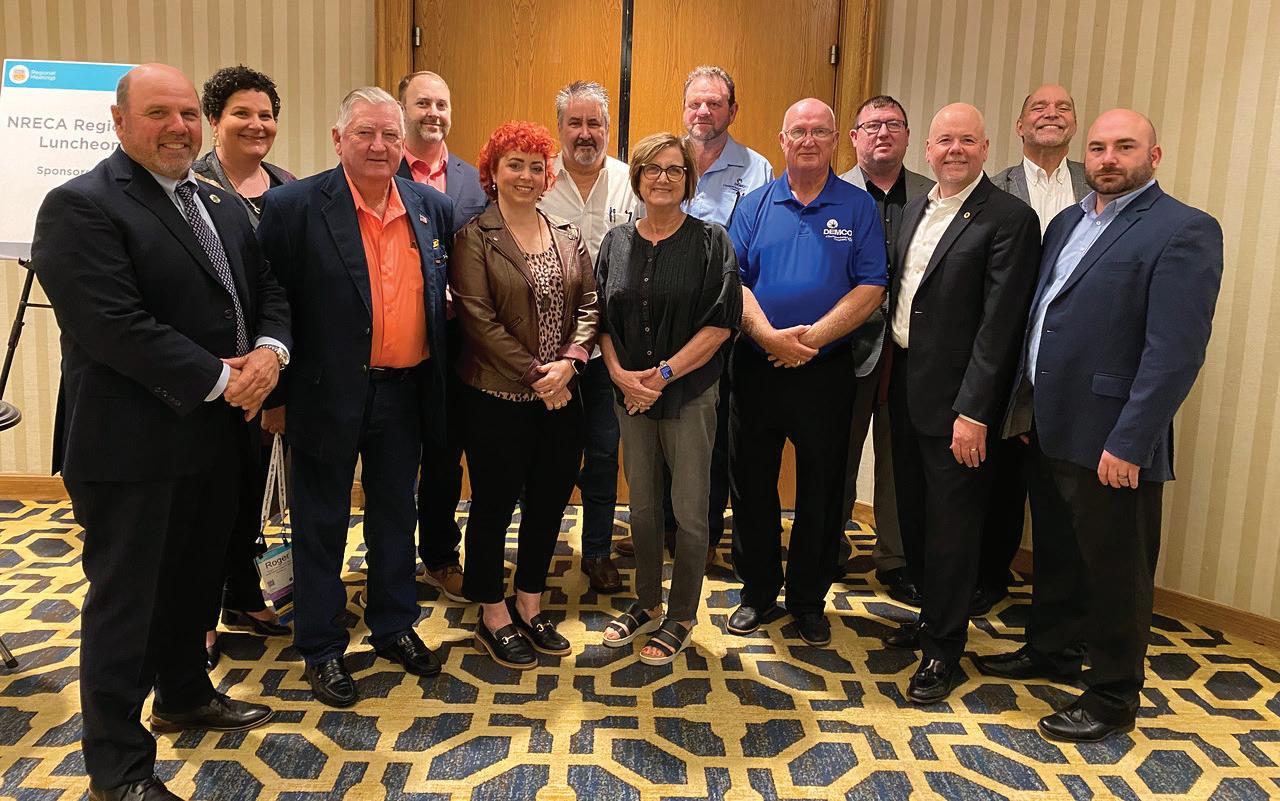
Louisiana Electric Cooperative general managers and board members attended the National Rural Electric Cooperative Association’s Regional Meetings 8 and 10 in New Orleans October 18-20. From left are Danny Berthelot, DEMCO; Addie Armato, Association of Louisiana Electric Cooperatives; Roger Dale DeHart, South Louisiana Electric Cooperative Association; Austin Haynes, Panola-Harrison Electric Cooperative; Anya Killmer, Jeff Davis Electric Cooperative; Trevor Benoit, SLECA; Jill McGraw, Kevin Beauchamp and Leslie Falks, DEMCO; Matt Peters, SLECA; Dane Hocott, Washington-St. Tammany Electric Cooperative; Mike Heinen, JDEC; and Eric Gautreaux, JDEC.

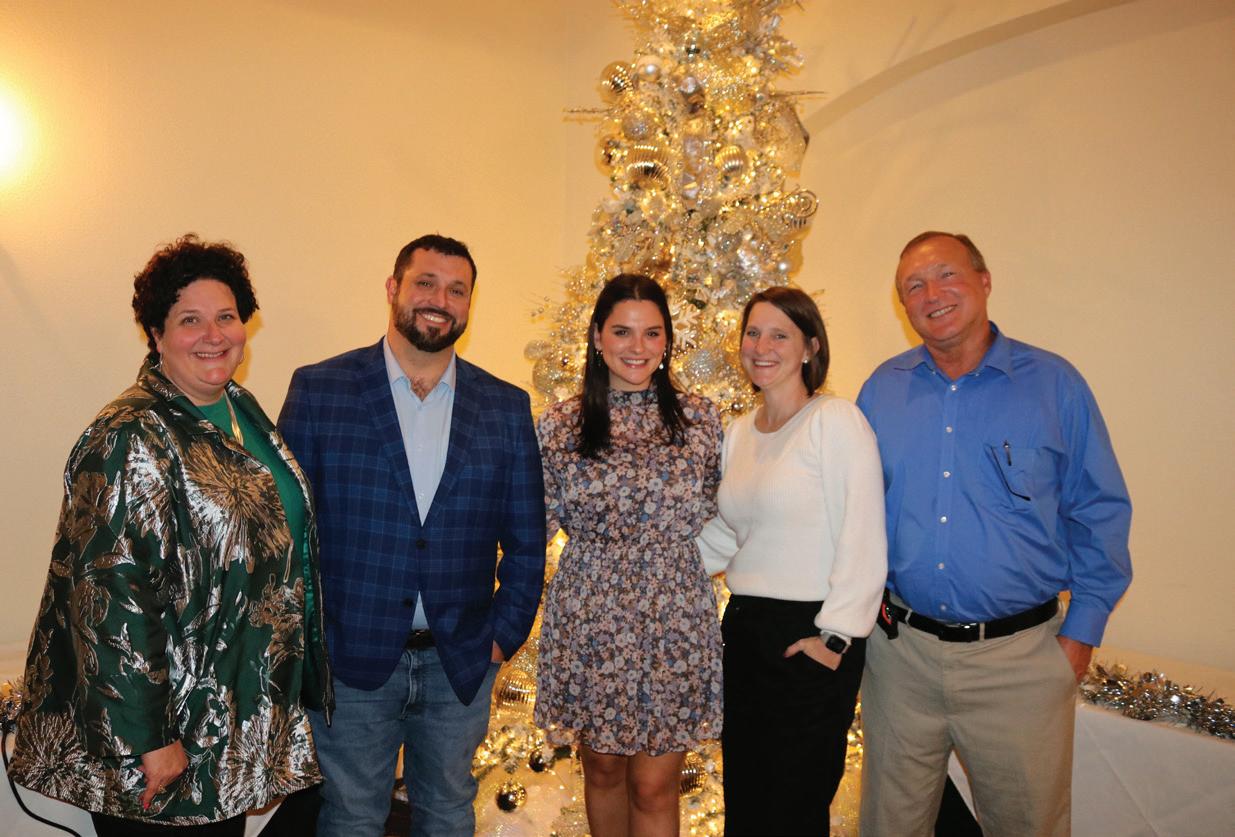

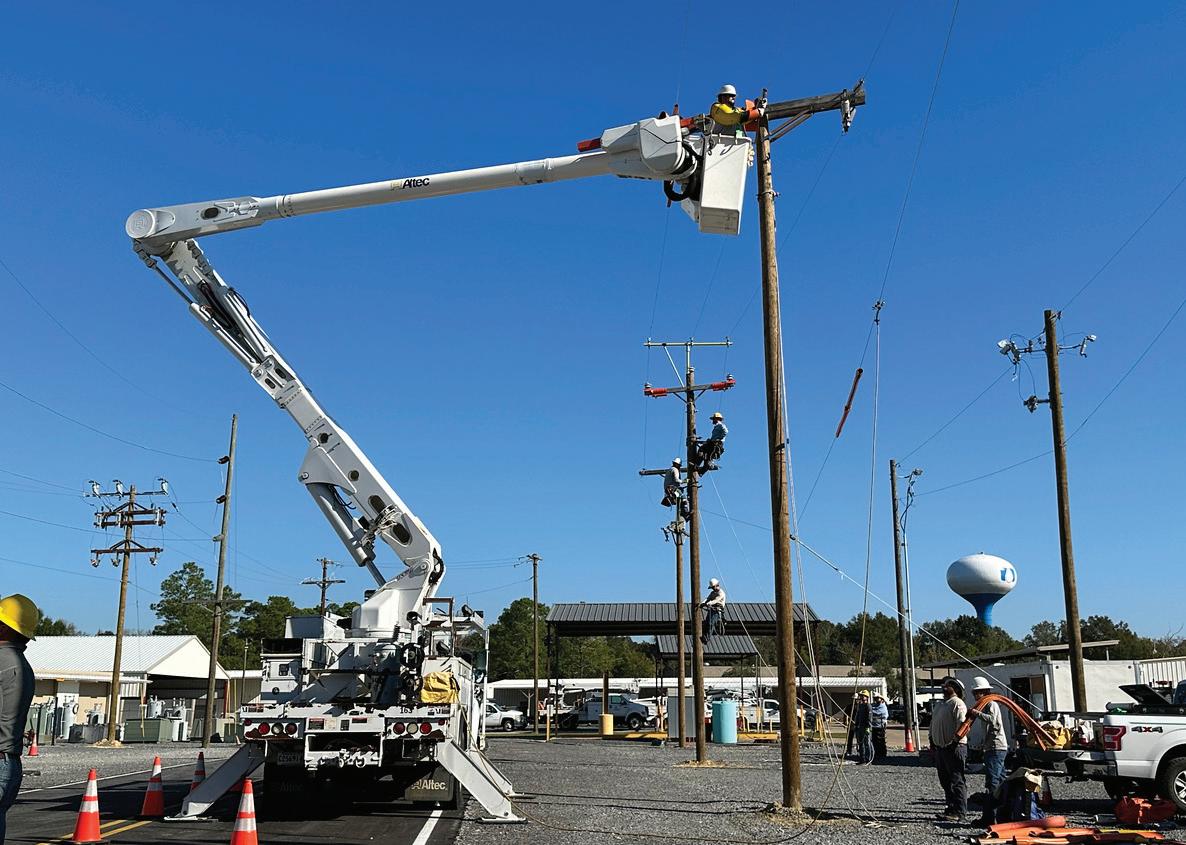
Practicing Techniques Used in the Field
Training to improve skills and stress the importance of working safely is an ongoing task for the line crews at all electric cooperatives. Live line and bucket truck training sessions, hosted by the Association of Louisiana Electric Cooperatives, were recently held at DEMCO headquarters in Greenwell Springs.

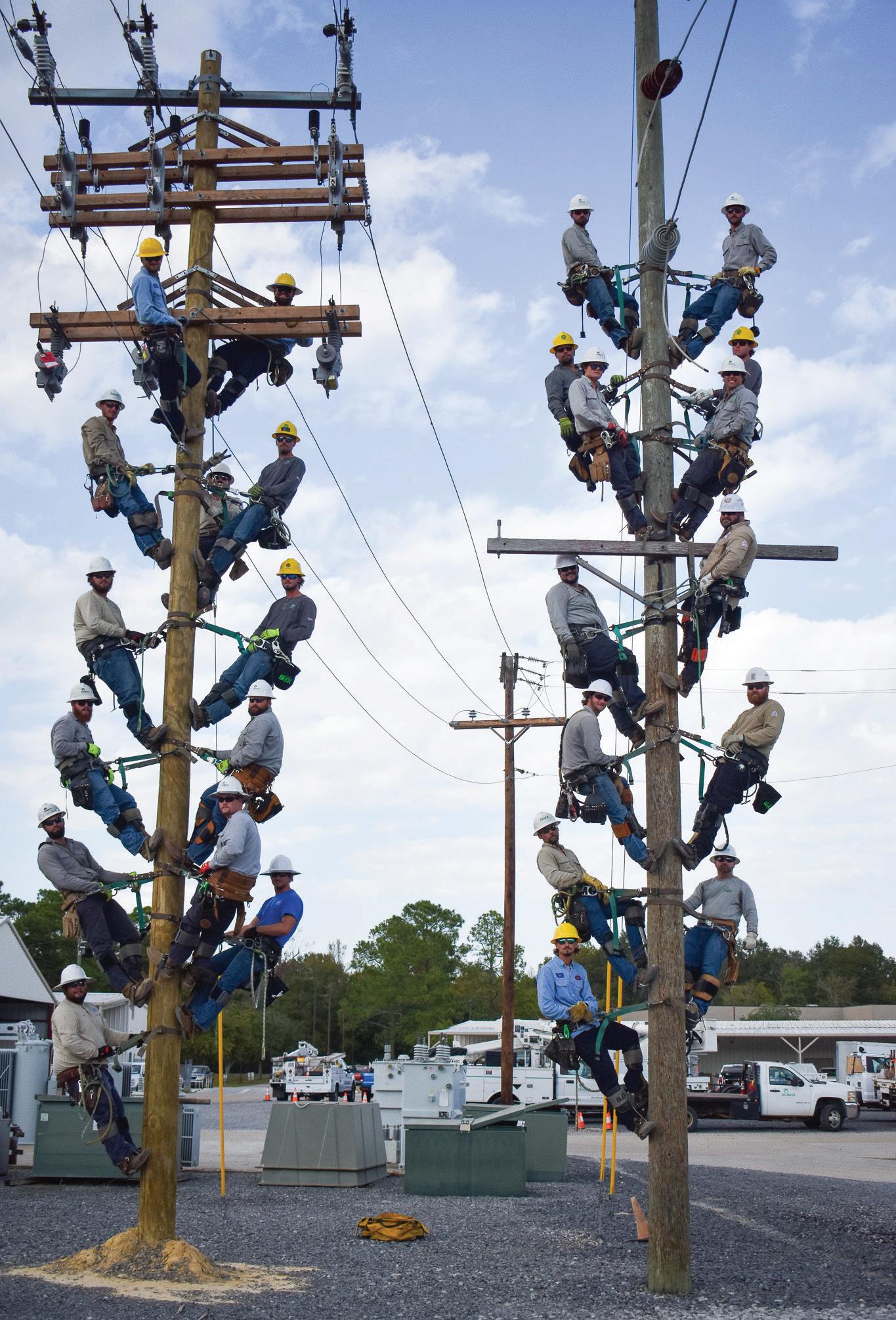

FAR LEFT: Mike
Jeff Davis Electric Cooperative general manager and National Rural UtilitiesCooperative Finance Corporation board member,
at the recent CFC Independent Borrowers Executive Summit
Can you nd all the words associated with winter in the puzzle below?
Use the word bank to check your work.
EFFICIENCY TIP:
Instead of turning up the heat in your home, wear an extra layer of clothing or get cozy under your favorite blanket!
• snowflake • mittens • scarf • snowball • chilly • icicles • cocoa • earmu s
• fireplace • blanket






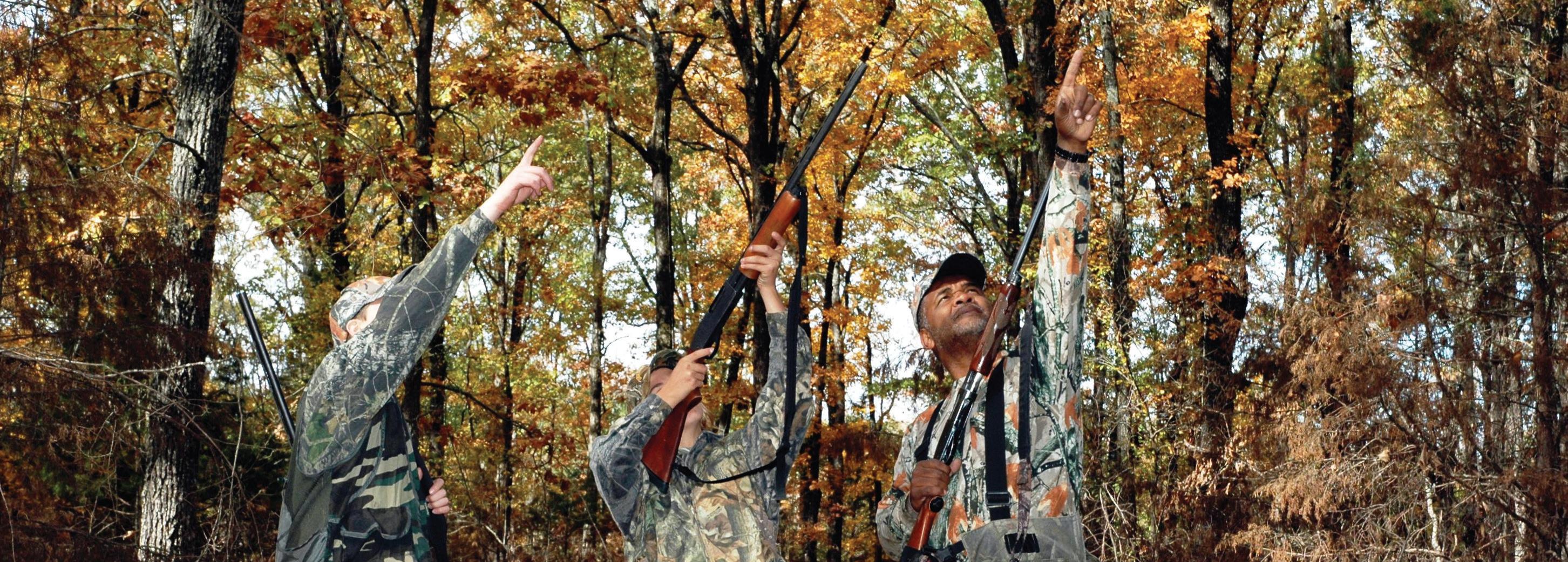



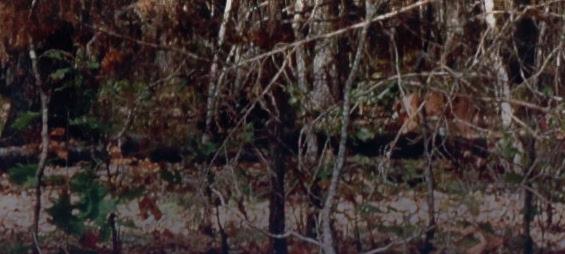
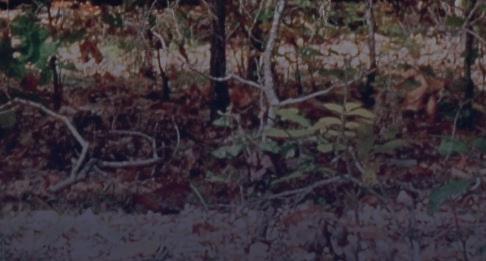
Many Louisiana sportsmen start hunting by pursuing squirrels at the side of their father, other relative or a family friend, but the tree-climbers can provide exciting sport for hunters of all ages.
To bag squirrels, hunters must spot them. The ghosts of the forest can instantly vanish when danger approaches. Masters of concealment, squirrels find countless places to disappear among the branches and foliage of big trees. Fox squirrels prefer to hide, but gray squirrels typically run as danger approaches.
In good squirrel habitat, walk through the forest slowly. Cover ground more thoroughly rather than cover more ground. Without making quick movements, advance a few steps. Then, stop to look and listen. Scan the trees for shaking branches, odd movements or anything that seems out of place, such as an oddly
shaped “knot” on a tree trunk or lumps on branches.
Smart hunters use their ears as much or more than their eyes to locate bushytails. Squirrels can be heard long before they can be seen. Listen for the distinctive sound of claws scratching on rough bark, shaking branches or objects dropping to the ground. Listen for barking squirrels proclaiming their territory, which usually happens a little later in the morning or late afternoon.
Periodically, find a stump, fallen log or a comfortable tree trunk and sit down for a while. Some people carry light, camouflaged folding chairs so they can sit anywhere. Remain as still and quiet as possible while scanning the trees. A good pair of binoculars helps detect wellconcealed bushytails.
If you spot a squirrel just out of range,
watch it. Determine where it might want to go. Sometimes, a squirrel foraging for food might wander into the gun range of an undetected hunter. If the squirrel doesn’t get closer, plan a good stalking route that takes advantage of any available concealment.
Hunting squirrels in pairs or teams can put more weight in a gamebag. Alerted bushytails habitually put tree trunks, large branches or other cover between themselves and hunters. Take advantage of a squirrel’s innate curiosity. One person can walk around the tree, making noise to grab the squirrel’s attention, while another remains still and silent.
Keying on that moving person, the squirrel might shift its position. That could give someone else a shot at it. When hunting alone, toss a limb, pinecone or another object to the other side of the tree. That might make a squirrel jump and reveal its position.
Bushytails love to gnaw on green pinecones. They tear apart the cone chips



to reach succulent seeds. Cones from various pine species ripen at different times. In addition, cones can stay edible much longer than acorns or other mast and can provide squirrels food for weeks.
“Squirrels seldom go into longleaf pines, but they frequently go into loblolly pines because they have more limbs all the way up the tree,” says Chester Thompson, a champion squirrel dog breeder and hunter from DeRidder. “In late season, many trees will still have cones. As the season goes on, squirrels move to different types of trees to feed upon whatever ripens at that time.”
A monoculture pine forest normally doesn’t offer enough nutrition throughout the year to hold many squirrels, but a mixed pine and hardwood forest provides abundant and varied food sources. At times, a single pine tree growing in an oak grove could attract squirrels like children to a candy store.
“Squirrels are usually in forests with mixed pines and hardwoods,” Chester says. “I like to hunt the edges where a pine forest transitions to a hardwood bottom. Squirrels go back and forth from the pines to the hardwoods.”
When feeding on cones, squirrels leave mounds of discarded husks, chips and other debris piled up around tree trunks. Look for green or freshly gnawed cone husks still sticky with sap to confirm recent
squirrel activity. After locating a good tree, find a comfortable spot to sit and wait. Listen for falling chips that sound like light rain hitting the forest floor
Sneaking up on squirrels in thick underbrush, palmettos and sucking mud seems almost impossible. However, in a place with an abundance of water like Louisiana, a small human-powered craft like a pirogue, canoe or kayak glides along silently. Along a promising shoreline, ease the paddle into the water and move forward slowly. Watch for movement. Periodically, stop to listen for activity. Use any available cover, and hug the inside shorelines on curves to keep the boat as hidden as possible.
Sportsmen can hunt solo by positioning a gun in a convenient, safe place when paddling, but many boaters prefer to work in teams. Designate one shooter who sits in the bow, ready for action, with the gun pointing in a safe direction. The other person controls the boat and helps spot game. After locating a squirrel, the paddler positions the craft so the shooter can make a safe shot.
Hunting from a boat is a good way for children to participate without slogging through soft mud or impenetrable thickets where walking isn’t easy. Children quickly grow bored sitting on cold ground and rarely remain still or quiet. In a boat,
at least the scenery constantly changes. Boaters can carry additional supplies, snacks and refreshments to take occasional breaks.
When hunting squirrels from boats, sportsmen might see other game, such as feral hogs. Hunters may spot an occasional rabbit on patches of slightly higher ground. During waterfowl season, hunters with the proper licenses, weapons and ammunition could jump wood ducks or other legal birds while quietly paddling along any Louisiana bayou.
It’s also possible to fish while looking for squirrels. Bushytails routinely see anglers in boats and largely ignore them
The Louisiana squirrel season runs through February 29, 2024, with a limit of eight per day. Season dates and regulations on some public lands might differ from the statewide dates and laws, so always check the regulations before hunting.
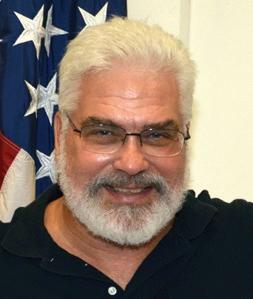
Born in New Orleans, John N. Felsher grew up in Slidell and attended the University of Southwestern Louisiana, now the University of LouisianaLafayette. He worked as the outdoors editor for four Louisiana newspapers and served in the Air Force. An avid sportsman, Felsher now works as a full-time professional freelance writer, broadcaster and photographer. Contact him at j.felsher@hotmail.com or through Facebook.



By Drew Woolley
Marc Broussard was 5 years old when his father first realized the boy could sing. By that time, Ted Broussard, famed Boogie Kings guitarist, had given up on fostering a love for music in Marc’s two older brothers, and he eagerly set out to teach his youngest son to play.
Marc remembers the first four songs his father taught him were an eclectic mix: “The Greatest Love of All,” originally recorded by George Benson but popularized by Whitney Houston, Chuck Berry’s “Johnny B. Goode,” The Beatles’ “Maxwell’s Silver Hammer” and Sammy Davis Jr.’s “The Candy Man.”
Armed with those standards, Marc ventured into the bustling Lafayette music scene where vocalists like G.G. Shine, Jerry LaCroix, Tommy McLain and Duane Yates captured his imagination. Marc was more than happy to tag along or haul equipment as long as he could be around the music.


“Any time it was an all-ages show, or my dad might be playing a high school reunion or something, I’d go help carry amps and guitars,” Marc says. “I’d get up and sing one or two songs at the most. That was a real treat for me. But it also gave me a little inside baseball as to what that life looked like. And frankly, I was enamored. I wanted everything to do with it. It seemed like the best gig in the world.”
That diverse musical background was a fitting entry point to Louisiana
music, which has always drawn on a vibrant mix of cultural traditions. Mike Shepherd, founder and chief executive of the Louisiana Music Hall of Fame, traces those origins back to the 1600s and one spot where everyone gathered.



“A place called Congo Square in New Orleans was really where the melting pot came together,” he says. “There were slaves from Africa, the Caribbean and the Canary Islands, but we also had French and Spanish influences. Europeans brought violins, accordions and horns. The African people tended to bring more percussion instruments. To say it simply, music is who we are. Always has been.”


While New Orleans jazz and blues have defined Louisiana music and influenced artists all over the world, it’s only one part of the rich musical history of the Bayou State. Marc himself identifies more with the blue-eyed soul movement of the ’60s and ’70s, with influences from the swamp pop that grew out of Southern Louisiana.
“For someone like me who, as a young man, was really into guys like Brian McKnight, Boyz II Men and Michael Bolton, these really freak singers, to all of a sudden hear a Lil’ Band of Gold record








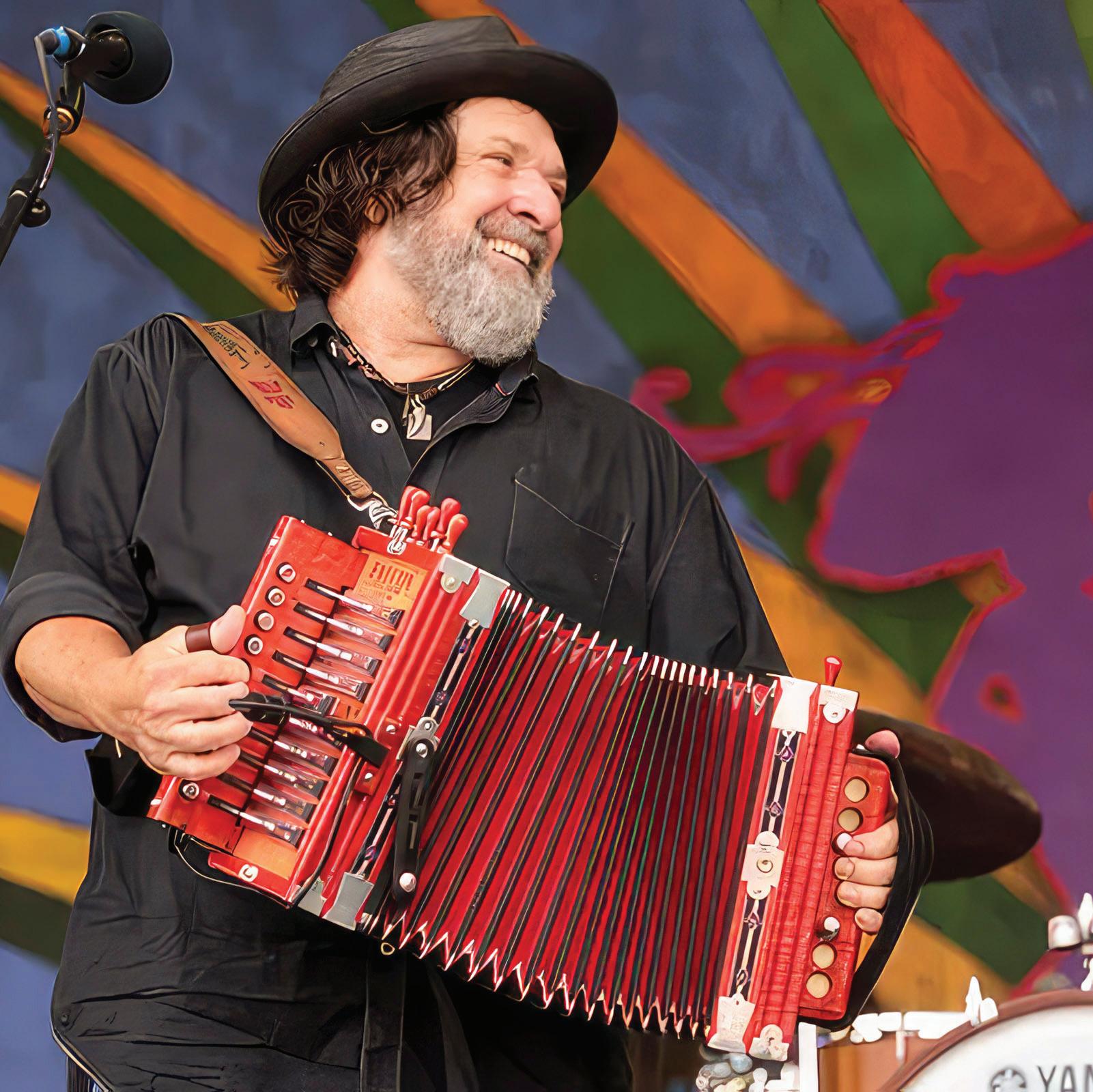






















































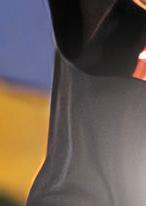






































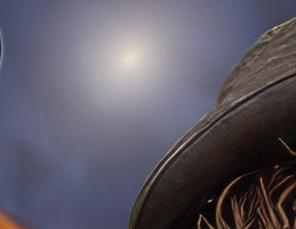


























































































































































































































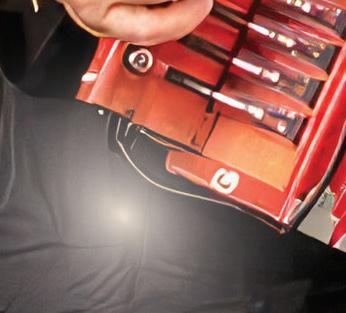
























where Warren Storm is singing like a freak of nature and then to hear him do ‘Mathilda’ at Jazz Fest. It was like going to church, man,” Marc says. “All of a sudden, the thing got real.”
Despite his musical heritage, Marc never thought his songs could take him to a career with a major label. At best, he expected to join his father and the host of other musicians he had grown up around who played as a side gig to supplement their income. Then his debut album “Carencro,” named for his hometown, hit it big in 2004.
“I recognized that Michael Jackson wasn’t the same thing as the Cajun and zydeco boys,” Marc says. “But I also never associated myself with the Michael Jacksons of the world. I definitely always saw myself as part of this place. So, I was really surprised when I started opening for groups like Maroon 5.”
It wasn’t until later in his career, when he got to know Cajun-punk fiddler Louis



Today, Marc tries to channel that same passion and energy into his own music. At live performances, his goal is less



















“Essentially, my whole young life was defined by snobbery with regard to singing,” he says. “The more technical a singer, the better I thought they were. And that’s just no longer the case. Louis Michot is not a technical vocalist, but he’s one of my favorite singers of all time because the passion—the force—he puts into some of these vocals is unrivaled. It’s a visceral thing when you see it.”

Michot and Zyde-Cajun artists like Wayne Toups and Roddy Romero, that Marc started to gain a new appreciation for Louisiana music rooted in a different style than the blues, soul and pop he was raised on.

































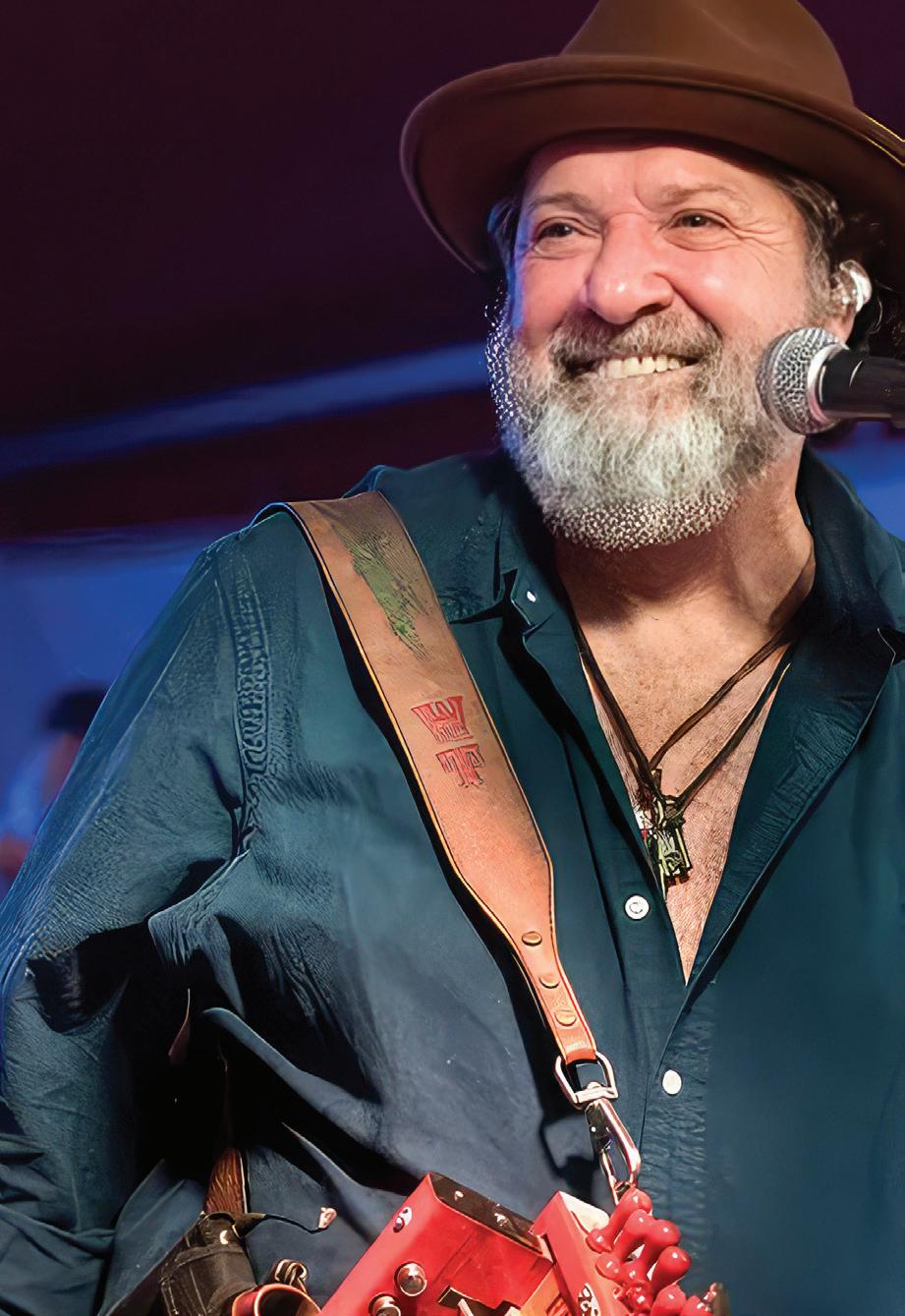
to show off his technical prowess as a vocalist and more to make sure everyone is having a good time.
“I just like having a party,” Marc says. "You see a show like Trombone Shorty or Big Sam or Prince, and it’s like, ‘That’s the way to do it!’ That's the phase I’m in these days, and who knows if I’ll live there forever. Maybe one of these days, I’ll start trying to make people cry all night, every night.”

Marc hopes he’s changed as much as a person since “Carencro” was first released as he has as a musician. But he’s excited to revisit those early days of his career with an anniversary show of his breakout album this year.
Marc also recently released a new





























































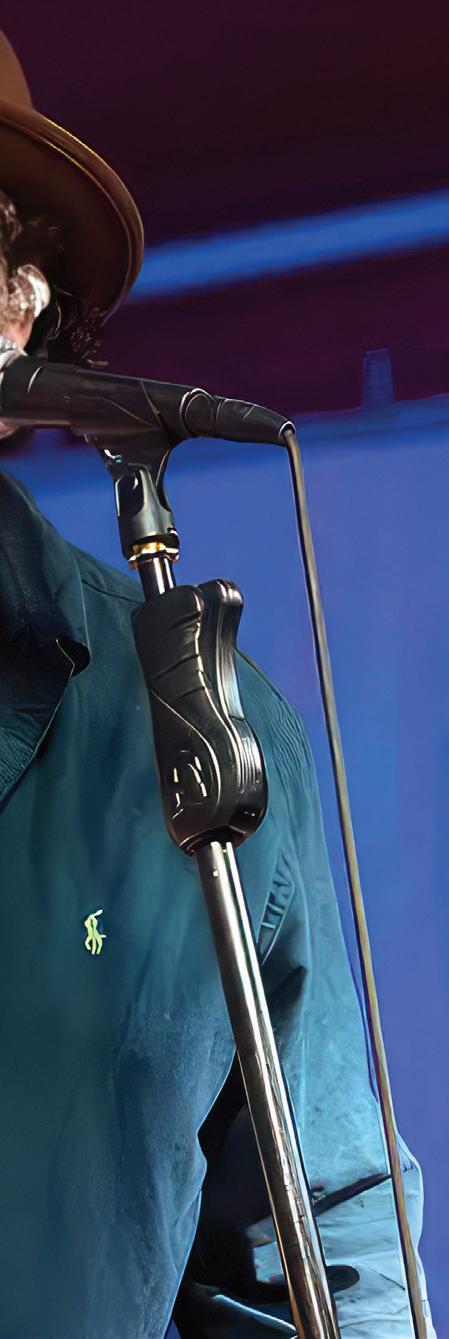














































Meeting Louisiana legends like Wayne Toups gave Marc a deeper appreciation for local sounds. Wayne has played the accordion since he was 13, mixing Cajun and zydeco styles into what he calls “ZyDecajun.” Dubbed “Le Boss” and “The Cajun Springsteen,” Wayne is a Grammy winner and a member of the Louisiana Music Hall of Fame. PHOTOS COURTESY OF WAYNE TOUPS
blues cover record, “S.O.S. 4: Blues for Your Soul,” with a portion of the proceeds benefiting the Guitars Over Guns youth rehabilitation program.
No matter where his career has taken him, he has never lost the connection to his hometown, where he still lives with his wife and children.
“This need to be who I am has always been intrinsically tied to this place,” Marc says. “It was never a thought that I had to move away from that. I was inextricably tied to the bayou.”
He’s far from the only musician who felt the pull of Louisiana’s rich musical history. Mike has inducted several artists into the Louisiana Music Hall of Fame who may not have been from the state but felt that same tug at formative moments in their careers.
No music is more synonymous with Louisiana than New Orleans jazz. Born in the early 1910s from a combination of Baton Rouge blues, brass band marches and a spirit of improvisation, jazz draws on influences from all over the state’s cultural melting pot. While the genre isn’t unique to Louisiana, the New Orleans variety will always be the real thing for Mike Shepherd, founder of the Louisiana Music Hall of Fame. “It can tend to be more raw and not fall within the lines necessarily,” he says. “Jazz players have a lot of lines they hold to. But in New Orleans jazz not so much.”
Driven by lively rhythms, accordion melodies and a mix of English and Creole-French lyrics, zydeco has its roots in the state’s rural communities. While it originated in the house parties and small social gatherings of Louisiana’s African American communities, zydeco was popularized by Clifton Chenier. He mixed it with elements of blues and R&B, earning him the title King of Zydeco.

Many found their way to Shreveport for the famous “Louisiana Hayride,” a music radio show from KWKH that was broadcast nationwide and was second only to the “Grand Ole Opry” broadcast for much of its run in the ’40s and ’50s. The show helped launch the career of a young Elvis Presley and offered a home to Hank Williams after his rejection from the Opry, giving Mike plenty of reason to enshrine them in the Hall of Fame. In 2024, he hopes to add Ray Charles and Dolly Parton, who also started their careers at “Hayride.”
“It’s just amazing the people who come to Louisiana and seek it out because it’s got the music,” Mike says. “It’s got all the music in the world.”































Popular in South Louisiana and Southeast Texas, swamp pop saw Cajun and Creole musicians shift away from French traditions toward the rock ’n’ roll sounds that were becoming popular in the 1950s. Typified by slow ballads with emotional lyrics over honky-tonk piano and a rhythm and blues backbeat, several swamp pop hits made the national charts throughout the decade. But many more are regarded as classics in the region they call home.






















If swamp pop was a rebellion, Cajun music is what it was rebelling against. Like zydeco, Cajun music is upbeat and relies primarily on accordion, fiddle and vocals featuring “Cajun talk,” as Mike refers to the lyrics. “They weave it into the songs, and they weave in cinstruments,” he says. “It was the stuff French people in south Louisiana played with. They couldn’t go out and buy expensive instruments. Most Cajun musicians have their stuff made by another Cajun because you have to know the music to know the instruments.”













































































Flyers, satellite dishes, posters, basketball hoops, decorative lights, even hunting stands. You name it, someone has tried to staple, nail or tie it to a power pole. Here’s a quick look at the dangers and pitfalls associated with unauthorized pole attachments.
Many state and local laws and the National Electrical Safety Code prohibit any unauthorized items on poles. Utilities can face fines if these attachments aren't removed.
Even small holes can allow moisture and insects past the pole sealant, which can shorten the life of the pole or weaken it and cause it to fall in a storm.
Posters and flyers can hide identifying markers on poles and slow repair work.
Staples, tacks and nails can puncture a lineworker’s insulated rubber gloves and expose them to electric shock.
Objects can cause a worker to fall if they snag their boots.
Nails and tacks can impede climbing hooks from sinking into the wood.
A person who gets too close to energized lines while attaching an object can be electrocuted.
Some materials posted on poles, like mirrors or holiday decorations, can be a distraction to drivers.


















































































By David Herder








We can all think of improvements we would like to make in the new year, whether it is eating healthier, volunteering more or lowering our expenses. One way to spend less in the new year and for many more to come is to make household energy efficiency a goal.
Making small changes to your routine can add up to significant savings. But do you know what adds up faster than small things? Big things.
If you’re willing to make the initial investment, resolve to go big by taking on one of these projects.
For most houses, heating and cooling air makes up the largest chunk of energy use. If you’re paying to heat or cool the air, you want to keep it inside your house.
Common spots to insulate are attics, walls, floors and anywhere your house contacts the outside. Just like you want a jacket between you and a snowstorm, you want insulation between your home and the outdoors.
Insulation is rated in R-values. Suggested insulation R-values are between R-30 and R-60, depending on your region and climate. In many cases, it is a good idea to get professional insulation help.
Air sealing is another step to prevent drafts by physically closing gaps and cracks. In some cases, this can be as simple as adding caulking or weatherstripping to places where you notice drafts. Contractors and some utilities can do a home blower test to find and seal leaks.
If you’re considering doing some air sealing on your own, the Department of Energy offers tips at www.energy.gov/energysaver/air-sealing-your-home.
What are windows but walls you can see through? Like outer walls, they touch the outdoors, and unlike many walls, they aren’t filled with thick insulation. Heat gain and loss through windows account for 25% to 30% of residential heating and cooling costs, according to the Department of Energy.

































































































Energy Star windows typically have high U-factors, a measurement of how well they insulate. Get multiple quotes for any home improvement project, including windows, and be on the lookout for rebates from utilities, state programs and the federal government.



















If you aren’t buying new windows right away, consider steppingstones such as adding weatherstripping, caulking gaps and using thermal drapes.
























Just like you don’t want your heated and cooled air to leak outdoors, you don’t want your air leaking into parts of the house where you never go.

If you have ductwork in an attic, crawlspace or other unairconditioned or heated area, the ducts could have leaks that increase your energy bill. According to the Department of Energy, 20% to 30% of the air moved through ducts is lost to leakage.

Hire a professional to seal your ducts, or seal them yourself with metal tape or duct mastic specifically designed for the job. Do not use duct tape, which will dry out and lose adhesion.
So far, we’ve covered three ways to keep your heated and cooled air where you want it. It turns out, how you heat or cool the air is also important.
If you’re willing to replace your furnace, or the unit is 10-plus years old, a heat pump is an efficient home heating and cooling upgrade. It can reduce heating costs by as much as 50% compared to electric resistance heating, according to the Department of Energy.
A heat pump works similarly to an air conditioner in reverse. It uses a refrigerant to pull heat energy out of the air outdoors, then moves it indoors and blows the heat into your living areas.
Also consider a heat pump water heater, which has all the same advantages but heats water rather than air.
If a heater turns on, but nobody is there to hear it, does it make a noise? One thing we know is that it would impact your energy bill.














































































































Before starting a project, it is important to take a step back and consider, “What will make the biggest impact?” This means knowing how efficient your house is and where the energy use is going.


A home energy assessment looks for air leaks, insufficient insulation, energy-hog appliances or other issues, and evaluates your total energy use. Conducting a home energy assessment lets you know where any inefficiencies in your house are, giving you a blueprint for fixing them.
Many utilities offer assessment programs, and the Department of Energy offers guides on assessments— including tips for a do-it-yourself assessment—at www.energy.gov/energysaver/home-energy-assessments.
Both programmable and smart thermostats help people save energy by changing the temperature throughout the day. You can save 10% on energy bills by turning back the thermostat 10% to 15% for eight hours a day, according to the Department of Energy.
Whether that means heating or cooling less during the day while you’re at work or turning things down while you’re sleeping, a programmable thermostat ensures you’re only heating and cooling the air you feel.




By Breanna Smith Pizzolato
Shreveport native Beaux Atkins is a musician with deep roots and high aspirations. With a big, soulful Southern voice and charismatic personality, he has won over fans of Southern rock from near and far.
Beaux grew up listening to his family members share stories about life, love and hard work. He listened as his grandfather would pick on the guitar and spent many evenings at the dance studio where his mom taught.
“I heard all kinds of music growing up,” he recalls. But Beaux always thought music would just be something to enjoy around the campfire.
“When I went to college, music found me,” Beaux says.
After graduating from the University of Louisiana-Monroe, he returned home and worked at a “chicken joint” while playing local gigs as often as possible. Soon, his roster was packed, and he was playing music full-time.
But he was missing something—an album to showcase the talent and hard work he lays out to fans at every show.
In August 2015, Beaux turned to Louisiana singer, songwriter and producer Monty Russell to help him make his first album, “Shout Hallelujah,” at Studio on the Ridge in Pegram, Tennessee, just west of Nashville, a funky little studio affectionately nicknamed Hippie Holler.
Russell enlisted a team of Nashville’s finest pickers and musicians, including James Cook, Derek Mixon, Ed Smoak, Kevin Adams and bluesman David Paul “P Mo” Moore. On vocals, Beaux is joined by gospel greats The McCrary Sisters, indie singer-songwriter Bethany Raybourn, Shreveport media, vocal star Linnea Fayard Allen, and Cook and Russell.
In “Shout Hallelujah,” Beau lays out
Southern Rock anthems and soulful blues with contributions from fellow Louisiana songwriters. The album details the hard road a musician chooses to travel and the people he meets along the way as Beaux croons heartfelt songs about love lost and soulmates gained and sings and shouts praises of sin and redemption.
The title track is a rousing honky-tonk gospel track that lays out the sins of riverboat gamblers, drifters and out-of-control train engineers who find Jesus in the nick of time.
Since releasing his album, he has shared the stage with dozens of legendary musicians, including Blackberry Smoke, The Benjy Davis Project, Frank Foster, Cody Canada and the Departed, The Eli Young Band, and Corey Smith. In 2021, Beaux released his second studio album, “Redfearn,” named after his maternal grandfather.
“I never met the man, but people tell me we look and act just alike,” he says. The album pays homage to his deep Southern roots. The title track features passionate guitar-picking, stirring harmonica melodies and riveting storytelling.
Songwriting inspiration often comes to him as he travels the long highways between gigs in Texas, Tennessee, Arkansas and back home to Bossier City. When Beaux isn’t on the road, he spends time with his wife and their three children, ages seven, three and one.
As Beaux looks to the past, it’s clear he was destined for a life as a songwriter and musician. In 2024, his goal is to release album No. 3.
“I’ve got six songs in the can,” he says. “Some I’ve written, and some are by friends.”
Connect with Beaux Atkins and be the first to know about his upcoming album and performances by following him on social media @beaux_atkins_ music or by visiting beauxatkins.com.
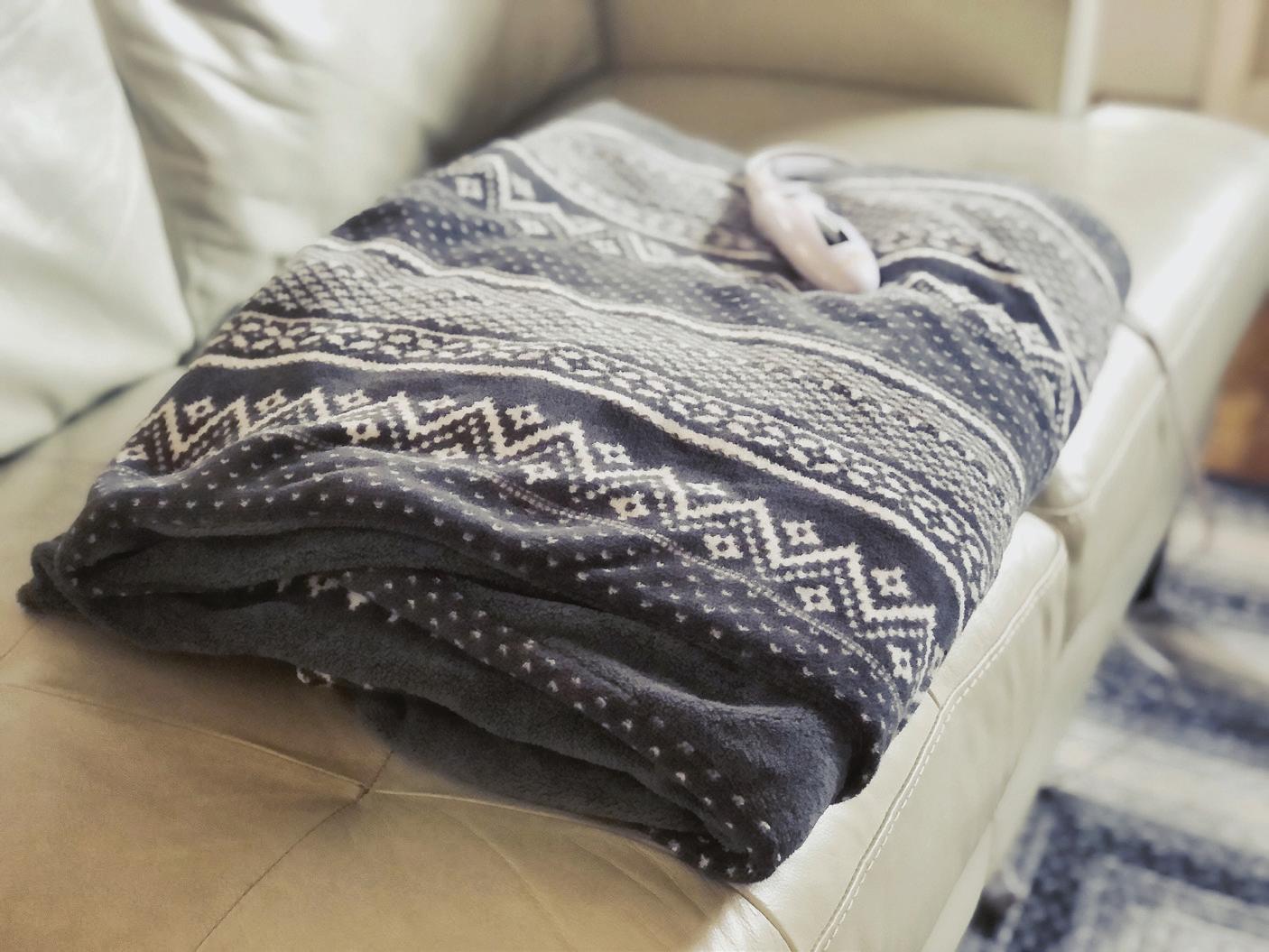
Small space heaters are meant to do exactly as their name says: heat small spaces. Unfortunately, many people use portable space heaters to heat their entire homes, which can take a toll on their energy bills.
The truth is, whether you should use a space heater really depends on your home’s efficiency and energy needs.
If you are using a space heater to compensate for problems in your home—such as inadequate insulation, drafty windows and exterior doors, or an inefficient heating system—space heaters are not a practical solution. Your best bet is to improve the overall efficiency of your home.
If you’re on a tight budget, caulking and weatherstripping around windows and exterior doors is a low-cost, easy way to save energy. Although more expensive, adding insulation can be a great next step.
Taking these proactive energy-saving measures rather than relying on space heaters for supplemental warmth can reduce your heating and cooling bills for years to come.
If your home is energy efficient but you are cold-natured and want a specific room to be cozier than the rest, a space heater may work for your needs.
A good comparison is ceiling fans. We use ceiling fans in the summer to cool people, not rooms. A space heater can be used in a similar way during winter.
Only use a space heater in a small space you are occupying. If possible, try to shut off other rooms to contain the warmth provided by the space heater.
If you decide to use a space heater, make sure it is properly sized for the space. Most heaters include a general sizing table.
A word about safety: The U.S. Consumer Product Safety Commission estimates that more than 25,000 residential fires are associated with the use of space heaters every year, resulting in more than 300 deaths. If you must use a space heater, buy a newer model that includes current safety features and carries the Underwriter’s Laboratory label.
Space heaters are energy hogs, and older models can be extremely dangerous. This winter, ditch the space heater and try these alternative solutions to stay cozy.
X Use an electric blanket to keep warm during the night.
X Caulk and weatherstrip around all windows and doors to prevent heat loss.
X Consider adding insulation to your attic and around ductwork.
Choose a thermostatically controlled heater to avoid energy waste and overheating. Place the heater on a level surface away from foot traffic when in use. Always keep children and pets away from a heater.
Before opting to use a space heater, consider alternative ways to stay warm, such as extra layers of clothing or UL-approved electric blankets. If you have hardwood or tile floors, put down area rugs to provide additional insulation and maintain warmth.
We know it’s cold out there, but remember this: In addition to safety concerns, space heaters can greatly increase your energy bills if used improperly.
For ways to reduce energy use and save money, visit energy.gov. n
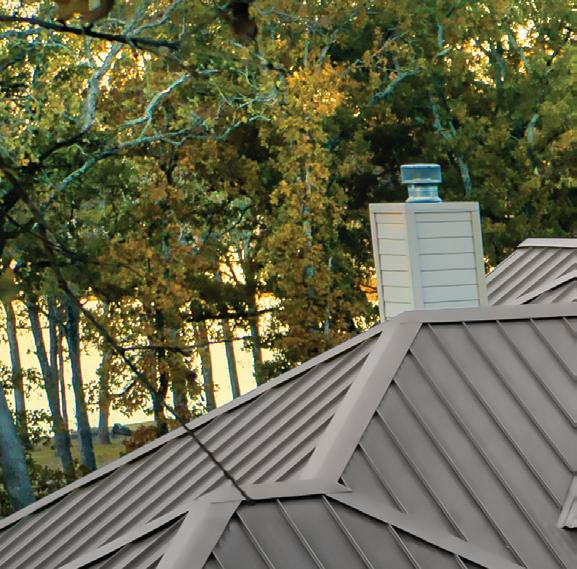
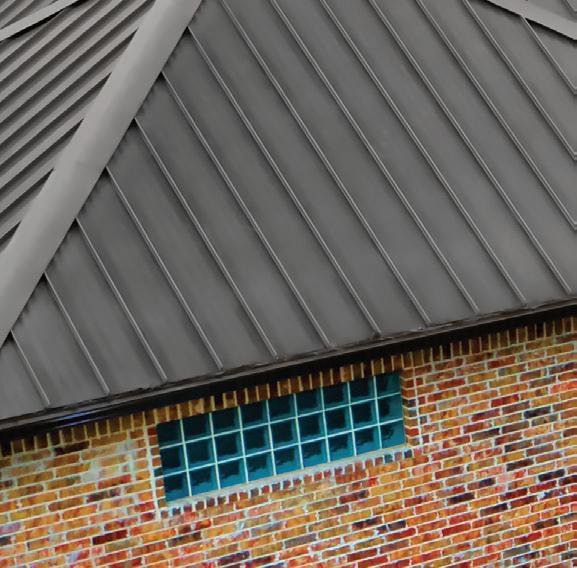

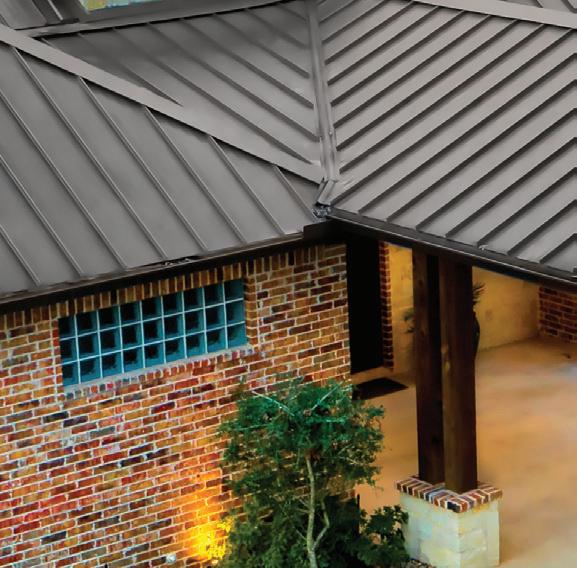

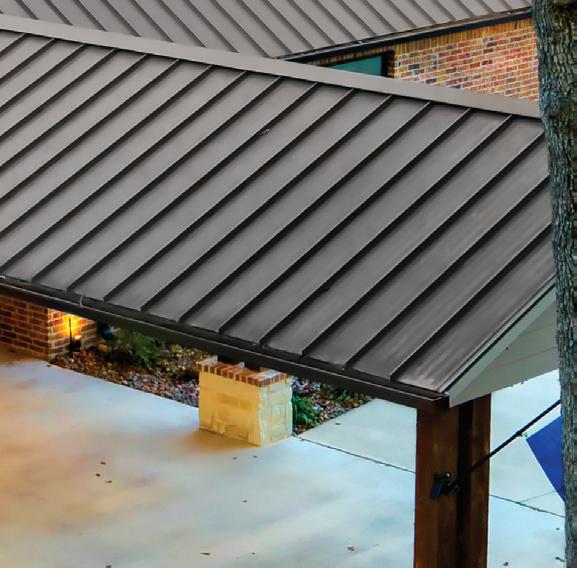




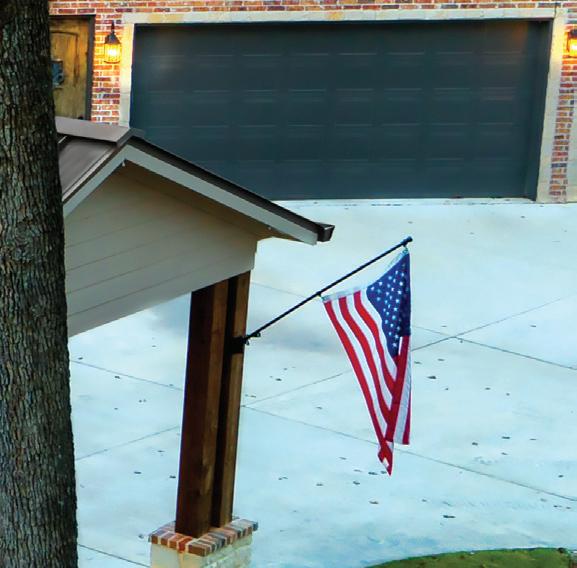













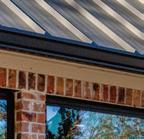
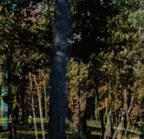


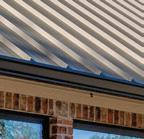
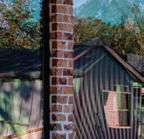
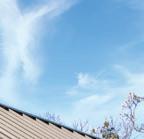



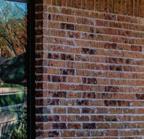


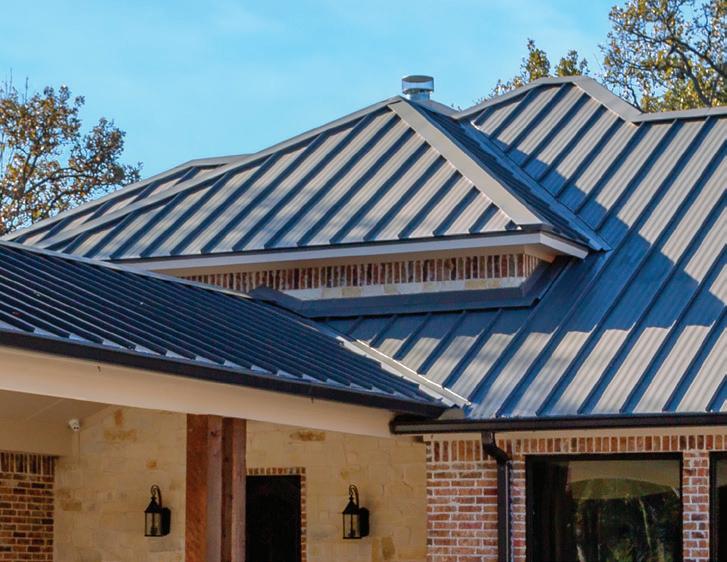











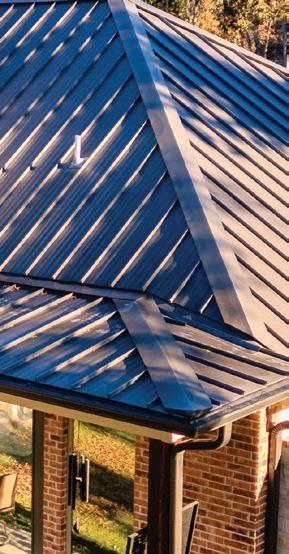





ABOUTYOURBILLANDSTARTWATCHING Taxes/feesapply.Via satellite req's 24-mo. agmt
LEADERINSPORTS ANDLOCALSPORTS24/7


Claim basedonofferingofNat’landRegional Sports Networks.RSNsavail.with CHOICEpackageor higher. Blackout restr’s apply. Availability of RSNs varies by ZIP code and package.
Req’s separate subscription/loginforNetflix, Max, PrimeVideo (see amazon.com/amazonprimefor details) and other 3rdparty apps.Restrictionsapply. High speedinternet-connected compatible device required.Google login required. $69 99 *
ENTERTA IN MENT PACKAGE CHANNELS
($84 99/mo w/ req’d ARS $15/mo Fee) w/24-mo. agmt. + taxes, fees, AutoPay & Paperless Bill.
Available onlyin the U.S (excludes Puerto Rico andU.S.V.I.). Someoffersmay notbeavailable throughall channelsandinselectareas.Differentoffers may applyforeligiblemulti-dwellingunits Alloffers,packages,programming,promotions,features, terms, restrictions & conditions and all prices andfees not included inprice guaranteeare subject to changeor discontinuationwithout notice.Visit directv.com/legal/or callfor details
VIA SATELLITE: Pricing: ENTERTAINMENT $69.99/mo., CHOICE $84.99/mo., ULTIMATE $114.99/mo., PREMIER $159.99/mo. for two years. Aſter 2 years, then month to month at then-current prevailing prices unless cancelled. Price excludes Advanced Receiver Service Fee of $15/mo. (which is extra and applies to all packages) and Regional Sports Fee of up to $15.99/mo. (which is extra & applies to CHOICE pkg or higher) and certain other add’l fees & charges. Additional Fees & Taxes: $7/mo. for each additional TV connection on your account. Wireless upgrade with HD DVR $99.00. Applicable use tax expense surcharge on retail value of installation, custom installation charges, equipment upgrades/add-ons, and certain other add’l fees & chrgs. See directv.com/directv-fees/ for additional information. $10/mo. Autopay and Paperless Bill Discount: Must enroll in autopay & paperless bill within 30 days of TV activation to receive bill credit starting in 1-3 bill cycles (pay $10 more/mo. until discount begins). Must maintain autopay/paperless bill and valid email address to continue credits. DIRECTV Svc Terms: Subject to Equipment Lease & Customer Agreements. Taxes, surcharges, add-on programming (including premium channels), protection plan, transactional fees, and Federal Cost Recovery Fee are not included in two-year price guarantee. Visit directv.com/legal/ or call for details. Equipment Non-Return-Fees: If you cancel your service, you must return your leased equipment. Failure to return any equipment will result in fees of $45 for each standard DIRECTV Receiver, each HD DIRECTV Receiver, each Genie Mini and each Gemini receiver and $135 for each DVR, HD DVR, Genie® HD DVR and/or Genie 2 DIRECTV Receiver. GEMINI DEVICE: To use the Device, you will need an Internet connection, your use of which is subject to the fees, restrictions, terms, and limitations imposed by your Internet service provider. Gemini Device(s) will deactivate aſter 90 consecutive days without internet connection. If that happens, you will not be able to receive service through that Device until you (re)connect to the internet.
VIA INTERNET: Service subject to DIRECTV delivered via internet terms and conditions (see https://www.directv.com/legal/legal-policy-center/). Requires high speed internet. Minimum internet speed of 8Mbps per stream recommended for optimal viewing. Residential customers only. Pricing: ENTERTAINMENT $69.99/mo., CHOICE $84.99/mo., ULTIMATE $114.99/mo., PREMIER $159.99/mo. for two years. Aſter 2 years, continues month to month at then-current prevailing prices unless cancelled. Additional Fees & Taxes: Price excludes Advanced Receiver Service Fee of $15/mo. (which is extra and applies to all packages) and Regional Sports Fee of up to $15.99/mo. (which is extra & applies to CHOICE pkg or higher) and certain other add’l fees & charges. See directv.com/directv-fees/ for additional information. State and local taxes or other governmental fees and charges may apply including any such taxes, fees or charges assessed against discounted fees or service credits. DIRECTV Svc Terms: Subject to Customer Agreement. GEMINI/GEMINI AIR DEVICE: First device included for well qualified customers ; otherwise $120 for new Gemini/Gemini Air or $49.99 for Certified Restored Gemini. Applicable taxes due at sale. Additional Gemini/Gemini Air: Additional device for well-qualified customers $10/mo. for 12 mos., otherwise $120 each or $49.99 for each Certified